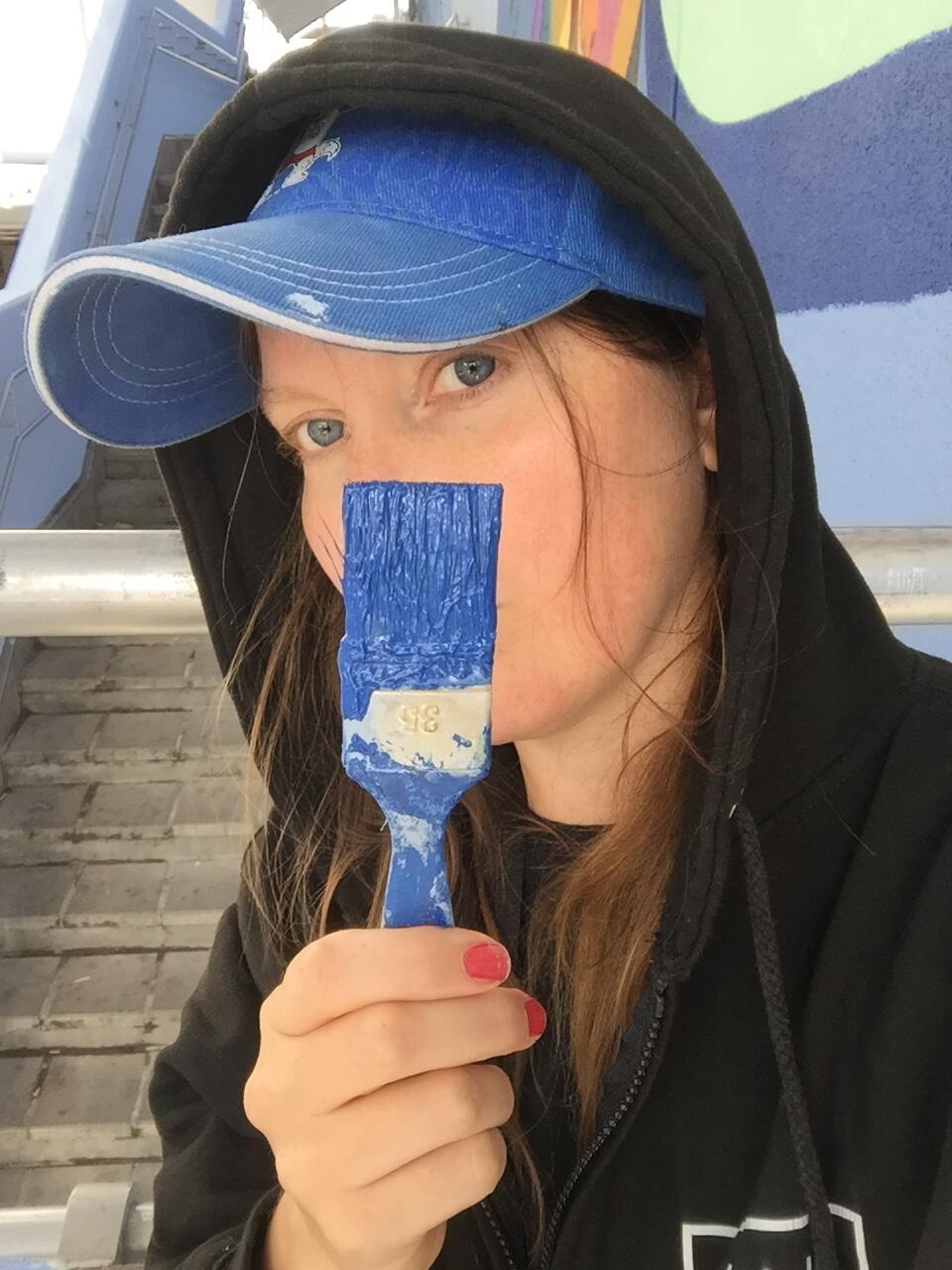Everyone can pursue artistry regardless of their background
Uniarts Helsinki’s quality system will be audited in the spring of 2024. During the project, we will publish a blog series to share more information about the university’s quality management, quality system and the audit.
One of the aspects that the audit will focus on is the university’s role in society. How can Uniarts Helsinki, as an institution, make sure that the work it does is of high quality and makes an impact, doctoral candidate Heidi Hänninen?

The aim of the Fair Sculpture project was to open up Uniarts Helsinki to a target audience that rarely ends up walking the hallways of our school. The project encouraged us to ask the question of who Uniarts Helsinki is open and accessible to. With the Fair Sculpture project, we wanted to make an impact on quality by bringing in kids and young people from an Eastern Helsinki suburb to the Sörnäinen campus so that they could create art. I suggested a group called KAS! Juniorit from Kontula Art School to join.
Fair Sculpture offered the young people a unique chance to work while receiving support from art experts in an environment that was used also by professionals. Our weekly subway trips to get to the Academy of Fine Arts facilities were our shared highlights that we looked eagerly forward to and that we still look back on.
Young artists were able to choose an artform of their personal liking to focus on during the project. Some wanted to roll up their sleeves and work with clay, while others were more drawn to the dance floor. In spring 2022, the young participants carried out a comprehensive art work consisting of a dance piece, a spray painting and clay works that were prepared during the course. The audience consisted of the participants’ family members, and everyone gathered for a meal afterwards. Comments like “That was the best project ever!” and “When do we get to go there again?” accurately portray the feelings that many of the participants had after the art field trips. On campus, what awaited the hungry artists was not just art but also sandwiches, juice and fruit, which disappeared from the table at the blink of an eye.
It’s true that the Helsinki city centre and Uniarts Helsinki are located, most of all mentally, quite far from our homes in Kontula. Thanks to the KAS! Kontula Art School community art project, I’ve had the chance to offer a long-term art hobby of high artistic quality to the children and young people of the area. For a family with low income, for example, it may be a completely unrealistic idea to pay for a hobby of an artistically gifted and motivated kid when it requires using public transport to go far away to the city centre. Then again, the challenge may also be that the family doesn’t use cultural services or that they simply aren’t used to viewing art as a viable profession or that they don’t regard artistic competence as a creative and valuable resource that could bring concrete benefits to the child’s life. But thankfully, everyone can pursue artistry regardless of their social classes and statuses, their cultural and language backgrounds or where they live.
Some of the kids at Kontula Art School have been involved in its activities since it was founded, and they have grown up with the group and the (street) art that it creates. These kids are already teenagers now who are starting to think about their future and possibilities of pursuing artistic work. These young people are at a stage in their lives where they might start thinking about the city centre and Uniarts Helsinki, too. Could this be a place where I could see myself studying?
I think it’s an activist deed to open the doors of an institution like Uniarts Helsinki to kids and young people who aren’t necessarily the first to line up for entrance examinations at Uniarts Helsinki due to their backgrounds. This field trains arts professionals and individuals that are active in society, they develop and shape it through their own art and artistic thinking.
Even if none of the kids or young people involved in the project end up studying specifically at Uniarts Helsinki, they may be future partners or audience members of the university. The most important thing is that these children, young people and their families know the value of art in the Finnish society. They see that institutions exist to promote this value – institutions that appreciate even small people and their creativity.
In Kontula, too, we have kids and young people who have a lot to give now and also in the future, where the role of art will be even more prominent, as I like to believe. Art and creativity are so important for human communities. They can even save lives. It doesn’t get much more high-quality than that!
The writer is a community artist and researcher who has lived and worked in Kontula since 2015 and whose studies in the doctoral programme at Uniarts Helsinki were not a given.
Puheenvuoroja taiteesta ja yhteiskunnasta
Tässä blogissa yhteisömme jäsenet nostavat esiin ajankohtaisia aiheita taidekentältä ja yhteiskunnasta.
Uusimmat julkaisut
Seuraa blogia